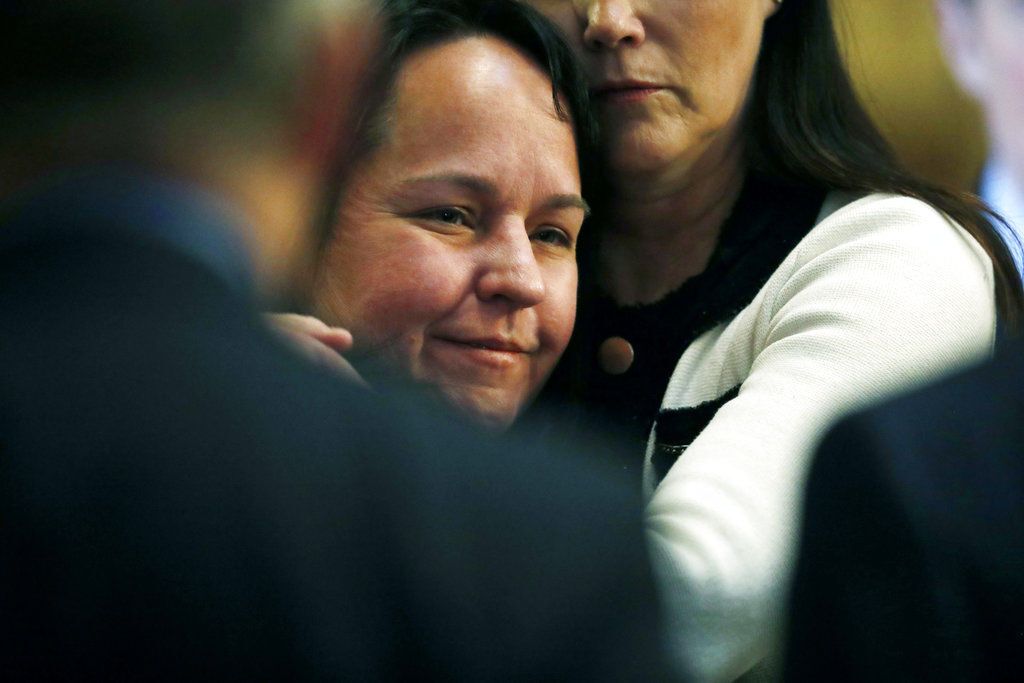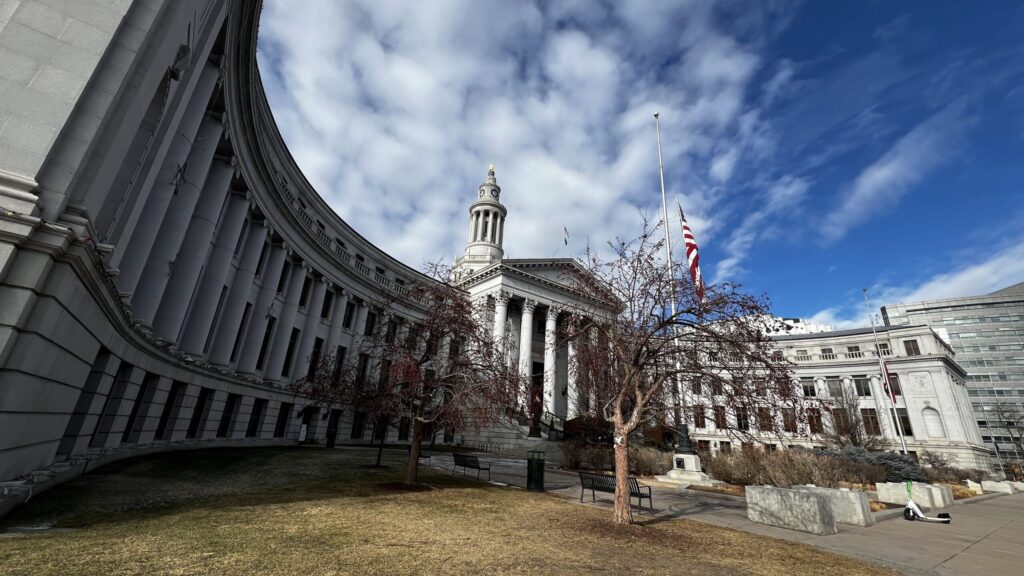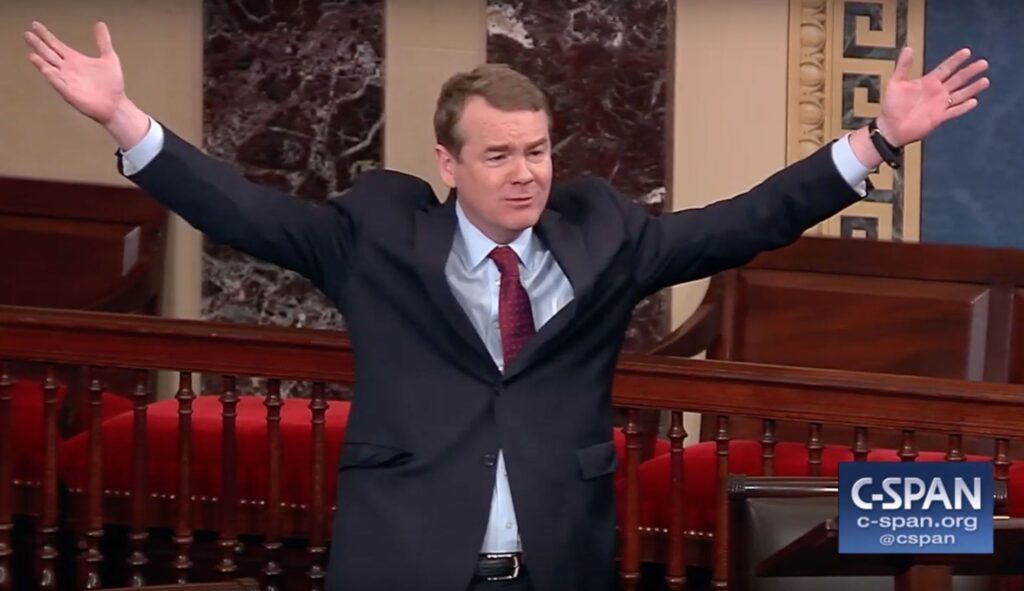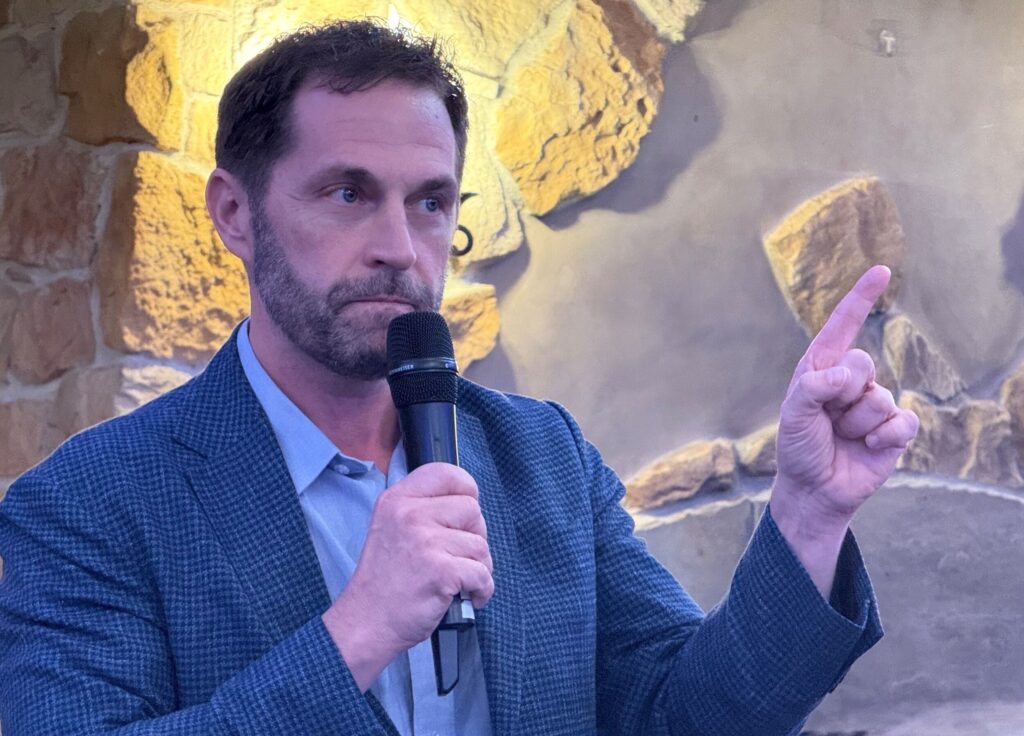What Colorado River basin states want — in their own words
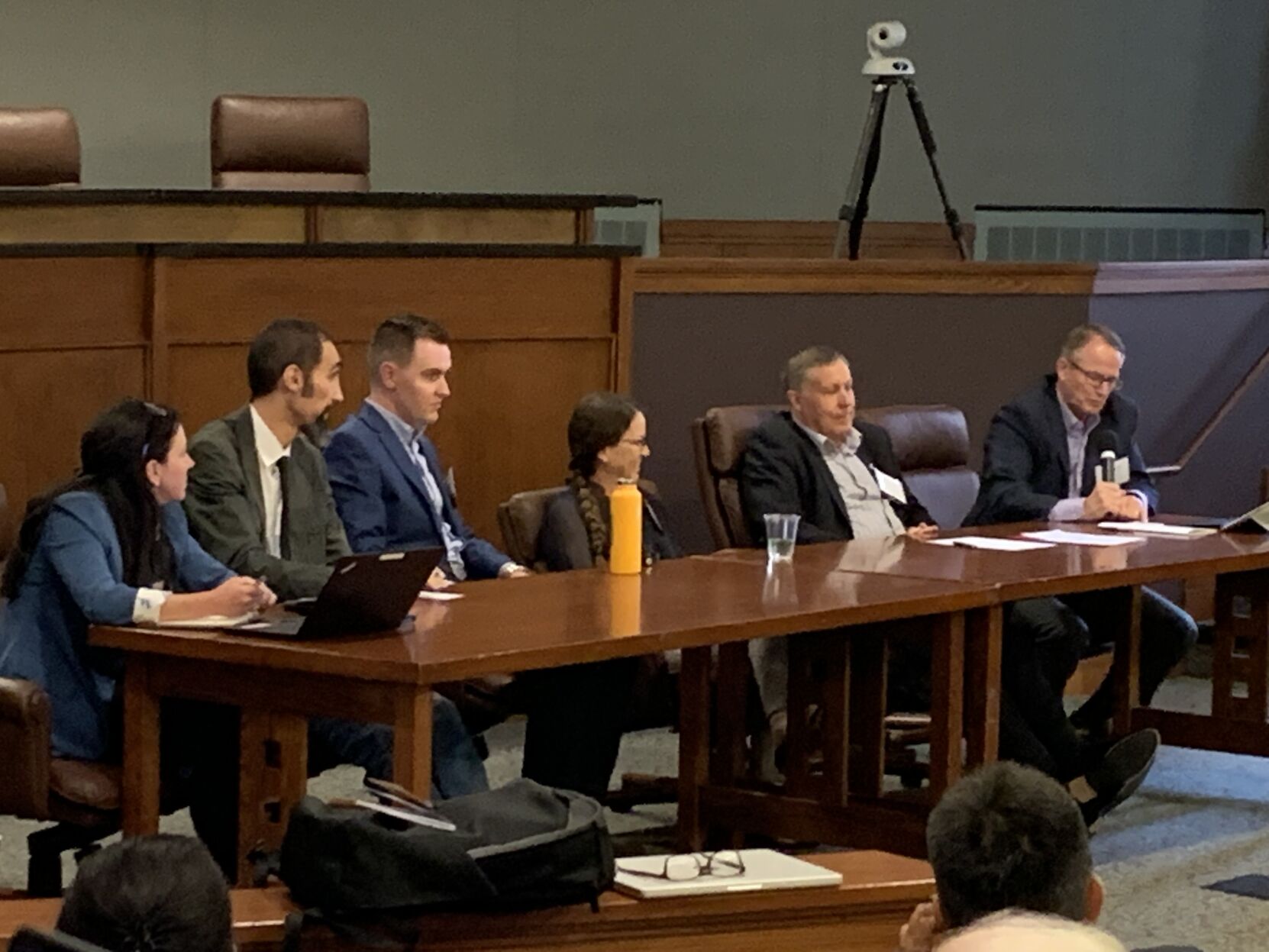
Nearing the first anniversary of the announcement of drastic conservation measures, representatives of the states of Colorado River’s upper and and lower basins reflected on a year full of negotiations, a wet winter and the road ahead.
One year ago this week, federal Bureau of Reclamation Commissioner Camille Touton dropped a bombshell during a Senate committee hearing: The seven states of the Colorado River had 60 days to come up with a plan to annually conserve up to four million acre-feet of water.
Should the states fail to do so, the federal government could step in with its own plan, under its authority to manage river operations.
The state negotiators appears close to a breakthrough in January when six states agreed on a plan, but California rejected it.
A compromise was reach three weeks ago for the lower basin states that didn’t quite have the full buy-in of the upper basin states. That plan requires the lower basin states to conserve three million acre-feet of water through 2026, with $1.2 billion in federal Inflation Reduction Act money to pay for it.
Representatives of six of the seven states – Wyoming’s official was unable to appear at the last minute – spoke last week at the 43rd Annual Colorado Law Conference on Natural Resources at CU-Boulder.
Here are their takeaways from the last year, and what they hope to see moving forward.
New Mexico
Touton’s comments to the Senate Committee on Natural Resources on June 15 was the turning point, one that jumpstarted conversations that had been happening at the margins, said Ali Effati, the Colorado River Basin bureau chief with the New Mexico Interstate Stream Commission.
As the seven states begin negotiations for future river operations, a process that could begin as early as this week, Effati said he wants a conversation about the imbalance on the river, which includes a straightforward and understandable accounting that also looks at evaporative and transit losses. That’s something the lower basin states have not taken into account in the past.
California
Some of the past year was unpleasant, said JB Hamby, chair of the Colorado River Board for California. Most particularly in January, he said, when the six states announced their plan but California didn’t accept.
“It was a very unpleasant time to…have this amount of division at a time when Reclamation was looking for a consensus-based framework,” Hamby said.
But there was a silver lining, and that was relationship-building among the lower basin states that resulted in the May 2023 announcement of a water-reduction plan that all three lower basin states will participate in.
Conserving nearly a trillion gallons of water between now and 2026 “puts us on a very effective path to start to develop the next set of guidelines,” he added.
One of the big questions facing the lower basin states is in how they will come up with the reductions agreed to in May. Hamby added that California’s share, about 1.6 million acre-feet, is coming from several irrigation districts that have programs to allow water to stay in the river. That includes one of the state’s largest, the Imperial Irrigation District, which already has a large-scale conservation and transfer program. That will provide 250,000 acre-feet in savings starting next year.
The Coachella district is leaving water in the river that would have otherwise replenished their groundwater basin. All of this has been helped by the greatly improved hydrology, meaning the much improved snow and rain activity that has taken place in California, he added.
The goal was never about reductions, Hamby said.
“The goal was about protecting elevations at Lake Mead and Lake Powell, and we’re doing at least as well, if not better, and we don’t need as much water to achieve that goal,” he added.
Going forward, and into the 2026 negotiations around river operations, Hamby said “it will be a different story if we want to really stabilize the system.”
That should include more storage, he said, not just stabilizing elevations.
Hamby said the good news from the snowpack is the seven states went from the looming possibility that Mead could hit “dead pool” – a level so low that Hoover Dam can no longer generate hydropower – to a situation where there is now zero chance of hitting those low elevations in either reservoir. This extra water, which Hamby said is about three million acre-feet that remains in the system, provides the stability the states need as they enter into the next set of river operational guidelines, rather than having to be focused on the “dumpster fire of the day.”
Hamby said their wish list for 2026 includes meeting compact obligations, particularly obligations to Mexico. The other is to ask how long these guidelines are for, how firm they are and how much flexibility would be incorporated into them.
Hamby also said there will be a need for a serious set of conversations to to ensure the lower basin is living within its means, as well as a conversation with the upper basin states about what is due to the lower basin.
What they don’t want is what nearly happened earlier this year, Hamby said.
“We saw on the brink this past spring, leading up into May 30th, a litigation conflagration coming in relation to the draft SEIS,” he said. “It’s what partly drove us to our proposal, and I think we are going to avoid that similar outcome at all costs.”
Nevada
Colby Pellegrino, deputy manager of resources for the Southern Nevada Water Authority and the Las Vegas Valley Water district, joked her challenge was to “curse less in meetings.”
“We think about the negotiations on the river themselves, but the stuff that enables the negotiations back home has been just as hard,” Pellegrino said.
In her state, they have banned turf in all new development except schools, parks and cemeteries and told luxury pool buildings they could not build pools of more than 600 square feet in size. Luxury pools can be as large as 3,000 square feet.
They also started charging more to customers who exceed seasonal water use, about 10 times the normal charge. That brought people with pitchforks to every public meeting, she said.
Using less water is hard, Pellegrino said, whether at the local level or among the water users of the seven states. The biggest challenge has been figuring out how the states navigate the current situation and avoid litigation, she added.
Nevada’s share of 285,000 acre-feet from the May agreement will come from an unused apportionment in Lake Mead, according to Pellegrino.
It was Mother Nature who changed the equation from a maximum of four million acre-feet per year to three million over three years, Pellegrino said. There’s six million acre-feet more water in the system today than the modeling showed a year ago, modeling that came from a Bureau of Reclamation supplemental environmental impact statement, she said. “We found a way to capitalize on the good hydrology.”
What Touton came up with was appropriate, she said, based on really dry scenarios that the states had to be prepared for.
Arizona
Tom Buschatzke, director of the Arizona Department of Water Resources, said hearing about a cut of up to four million acre-feet, on top of what his state already cut, was a big challenge.
Prior to June 2022, Arizona had already reduced its Colorado River allocation by 800,000 acre-feet. Arizona has the most junior water rights of the lower basin states, and the fear was the Central Arizona Project, which provides water for irrigation and municipal use in the Phoenix area, would go to zero.
That challenge is compounded by the rising demands of Native American tribes for their water rights. Of the 30 tribes in the Colorado River basin states, 22 are located in Arizona alone.
What helped was the good hydrology from the above-average snowpack, which created a backstop.
As to Arizona’s sometime-fraught relationship with California, Buschatzke said he agreed with Hamby about the change in the relationships. The two met a few weeks after the January agreement-that-wasn’t-an-agreement, and that meeting allowed them to lay their cards on the table and get to know each other. That jumpstarted what led to the lower basin agreement, Buschatzke said.
Both Arizona and California already are signing agreements to make those reductions. Buschatzke said agreements in his state have already put some of the water “in the bank.”
Utah
Gene Shawcroft is the chair of the Colorado River Authority of Utah. Taking those agreements back home was a challenge, too, he said. What happened in the years before 2022, when the river’s forecast said volume would drop by two million acre-feet, was horrifying, he said. The positives, however, was developing the relationships that allow all the states to move forward. “There are many more things we have in common,” he added.
Shawcroft noted the forecast at the time Touton made her statement was at the tail end of a horrible runoff year, with the potential for a third straight La Niña year, which brings in hotter temperatures and less precipitation. A lot of decisions were made based on that possibility, he explained.
The lower basin plan announced last month didn’t quite have the buy-in of the upper basin states, largely because those states (Utah, Wyoming, Colorado and New Mexico) didn’t see the plan before it was submitted to Reclamation, although they supported its submission.
“As far as the plan is concerned, I am anxious to see some more details,” Shawcroft said. “We’re trying to understand how that fits in more detail; that’s why at the end of the day, we couldn’t all say, yes, we support the plan…If you’ve got a plan that works better than the others that have been proposed, we’re all ears. Let’s see it.”
Colorado
Becky Mitchell is Colorado’s representative on the Upper Colorado River Commission as well as director of the Colorado Water Conservation Board. Those dual roles will drop down to one on July 1, when she relinquishes her CWCB position and focuses full-time on the Colorado River crisis.
For her, the biggest challenge was the sense of urgency and the feeling to do something different, and as quickly as possible, she said.
Mitchell added she believes the federal money should be spent on permanent and verifiable changes. People are tired of moving from crisis to crisis, she added, and they’re looking to the leadership that is taking proactive action, and doing it in a way that provides a more secure and certain future for everyone.

marianne.goodland@coloradopolitics.com



